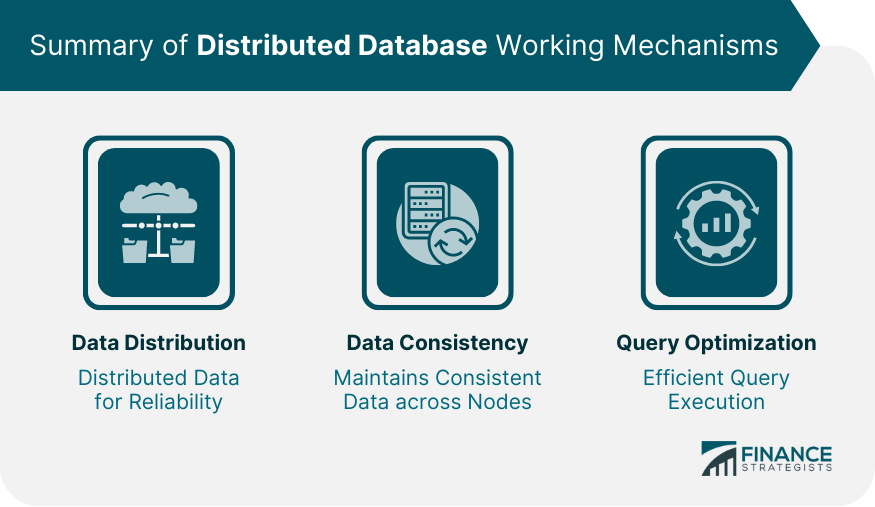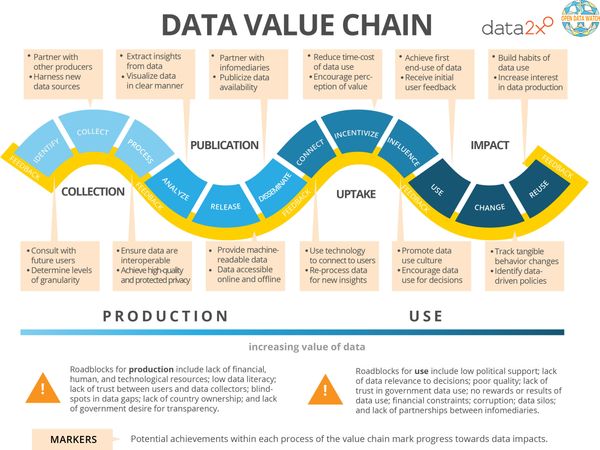Overview
What is database optimization?
Database optimization is the process of improving the performance and efficiency of a database system. It involves various techniques and strategies to enhance the speed and effectiveness of data retrieval. The goal of database optimization is to ensure fast and efficient data retrieval, allowing users to access the required information quickly. By optimizing the database, organizations can improve overall system performance, reduce response times, and enhance user experience.
Importance of database optimization
Database optimization is a crucial process in ensuring the efficient performance of a database system. It involves analyzing and restructuring the database to improve its speed, reliability, and overall functionality. By optimizing the database, organizations can achieve faster query response times, reduce data redundancy, and enhance data integrity. Moreover, database optimization plays a vital role in minimizing storage requirements and maximizing resource utilization. It helps in optimizing data retrieval, ensuring data consistency, and improving overall system performance. Therefore, understanding the importance of database optimization is essential for organizations to maintain a well-functioning and high-performing database system.
Common challenges in database optimization
Database optimization is a crucial aspect of maintaining efficient and high-performance databases. However, it is not without its challenges. There are several common challenges that database administrators and developers often face when it comes to optimizing databases. One of the main challenges is identifying and resolving performance bottlenecks. These bottlenecks can occur due to various factors such as inefficient queries, lack of indexing, or inadequate hardware resources. Another challenge is balancing the trade-off between read and write operations. Database optimization requires finding the right balance between optimizing read operations for faster data retrieval and optimizing write operations for efficient data storage. Additionally, scalability is another challenge in database optimization. As the amount of data and the number of users increase, the database needs to be able to handle the increased workload without sacrificing performance. Overall, database optimization requires careful analysis, strategic planning, and continuous monitoring to overcome these challenges and ensure optimal database performance.
Understanding Database Performance

Factors affecting database performance
Database performance can be influenced by various factors. One of the key factors affecting database performance is the implementation of effective strategies for performance tuning. By employing the right techniques and approaches, organizations can optimize their databases to deliver faster query response times and improve overall system performance. These strategies involve analyzing and optimizing query execution plans, indexing appropriately, and properly configuring database parameters. Additionally, monitoring and managing database resources, such as memory and disk space, is crucial for maintaining optimal performance. Implementing these strategies for performance tuning can significantly enhance the speed and efficiency of database operations.
Measuring database performance
Measuring database performance is a crucial step in the process of database optimization. It involves evaluating the efficiency and effectiveness of a database system to ensure it meets the desired performance standards. One of the key factors to consider when measuring database performance is the use of relational database management systems (RDBMS). RDBMS provide a structured and organized approach to managing data, allowing for efficient storage, retrieval, and manipulation of information. By utilizing RDBMS, organizations can optimize their database performance and enhance overall system functionality. Furthermore, RDBMS offer a wide range of features and capabilities that enable developers to implement complex data models and ensure data integrity. Therefore, understanding and utilizing RDBMS is essential for effectively measuring and improving database performance.
Identifying performance bottlenecks
Identifying performance bottlenecks is a crucial step in database optimization. By identifying the areas of the database that are causing slowdowns or performance issues, developers can take targeted actions to improve overall performance. This involves analyzing various factors such as query execution time, resource utilization, and index usage. By pinpointing the bottlenecks, developers can then implement strategies such as query optimization, index tuning, and database schema improvements to enhance the efficiency and responsiveness of the database system.
Optimization Techniques

Indexing
Indexing is a crucial aspect of database optimization. It involves creating data structures, known as indexes, that improve the speed and efficiency of data retrieval operations. By leveraging data indexing, organizations can significantly enhance the performance of their database systems. Indexing allows for faster search and retrieval of specific data, reducing the time required to access information. It also enables efficient sorting and filtering of data, enabling organizations to analyze and extract insights from their data more effectively. By implementing indexing techniques, organizations can optimize their database performance and ensure smooth and efficient data operations.
Query optimization
Query optimization is a crucial step in database optimization. It involves improving the efficiency and performance of queries executed on a database. By analyzing and restructuring queries, database administrators can reduce the time and resources required to retrieve and manipulate data. This leads to faster response times and improved overall system performance. Key factors to consider during query optimization include indexing, query rewriting, and database schema design. By employing these techniques, database administrators can ensure that queries are executed in the most efficient manner possible, resulting in optimal database performance.
Data normalization
Data normalization is a crucial step in database optimization. It involves organizing data into well-structured tables to minimize redundancy and improve data integrity. By eliminating data duplication and inconsistencies, data normalization ensures efficient storage and retrieval of information. This process enhances database performance, simplifies data management, and facilitates future updates and modifications. Properly normalized databases also support better data analysis and reporting, enabling businesses to make informed decisions based on accurate and reliable information.
Hardware Considerations

Choosing the right hardware
Choosing the right hardware for your database optimization is crucial. The performance and efficiency of your database heavily depend on the hardware you choose. When selecting hardware, consider factors such as processing power, memory capacity, and storage capacity. Additionally, ensure that the hardware is compatible with your database management system. By choosing the right hardware, you can significantly improve the speed and reliability of your database operations.
Storage optimization
Storage optimization is a crucial aspect of database management. It involves implementing strategies and techniques to efficiently utilize storage resources and improve the overall performance of the database. By optimizing storage, organizations can reduce costs, enhance data retrieval speed, and ensure data integrity. Key considerations for storage optimization include minimizing data redundancy, utilizing compression techniques, and implementing effective indexing. Additionally, partitioning data, archiving infrequently accessed data, and optimizing storage allocation can further enhance database performance. Implementing these storage optimization techniques can result in faster query execution, reduced storage requirements, and improved overall database efficiency.
Memory management
Memory management is a crucial aspect of database optimization. It involves the efficient allocation and deallocation of memory resources to ensure optimal performance and minimize memory-related issues. By effectively managing memory usage, databases can improve query execution times, reduce disk I/O operations, and enhance overall system responsiveness. In the context of database optimization, key considerations for memory management include caching strategies, buffer pool management, and query optimization techniques. Properly configuring these aspects can significantly impact the efficiency and scalability of a database system.
Database Maintenance

Regular backups
Regular backups are a crucial aspect of database optimization. By regularly backing up your data, you ensure that in the event of a system failure or data loss, you can restore your database to a previous state. This not only helps protect against data breaches and accidental deletions but also provides a safety net for recovering from hardware failures or software errors. Additionally, regular backups enable you to maintain data integrity and consistency by allowing you to roll back to a known good state. Therefore, it is essential to establish a routine backup schedule and ensure that backups are performed consistently and securely.
Data archiving
Data archiving is a crucial aspect of database optimization. It involves the process of moving data that is no longer actively used to a separate storage location. This helps in improving the overall performance and efficiency of the database system. By archiving data, organizations can free up valuable disk space, reduce backup and restore times, and optimize query performance. Additionally, data archiving ensures compliance with data retention policies and facilitates data governance. It is important to identify the most important keywords that can be formatted bold in order to highlight the key concepts of data archiving.
Database monitoring
Database monitoring is a crucial aspect of database optimization. It involves the continuous tracking and analysis of database performance to ensure optimal functionality and efficiency. By monitoring key metrics such as response time, query execution, and resource utilization, organizations can identify and address performance bottlenecks, optimize database configurations, and proactively prevent issues that may impact the overall performance and user experience. Effective database monitoring enables businesses to maintain high availability, reduce downtime, and improve scalability. It also helps in identifying and resolving potential security threats and ensuring data integrity. With the increasing complexity and scale of modern databases, implementing a comprehensive database monitoring solution is essential for organizations to achieve optimal database performance and deliver seamless user experiences.
Conclusion

Benefits of database optimization
Database optimization offers several benefits to businesses. Firstly, it improves the overall performance and efficiency of the database system, resulting in faster query execution and reduced response times. This, in turn, enhances the user experience and increases customer satisfaction. Secondly, database optimization helps to minimize data redundancy and inconsistency, ensuring data integrity and accuracy. By eliminating duplicate and outdated records, it reduces storage requirements and improves data quality. Additionally, database optimization enhances data security by implementing access controls and encryption mechanisms, protecting sensitive information from unauthorized access. Lastly, optimizing the database reduces the risk of system failures and downtime, resulting in improved system reliability and availability.
Continuous improvement
Continuous improvement is a crucial aspect of database optimization. By continuously striving to enhance the performance and efficiency of the database, organizations can ensure that their systems are running at their best. This involves regularly monitoring and analyzing the database, identifying areas for improvement, and implementing necessary changes. Through continuous improvement, businesses can optimize query execution, minimize data redundancy, and improve overall database performance. It is important to prioritize key factors such as indexing, query optimization, and data normalization to achieve optimal results. By adopting a proactive approach to database optimization, organizations can stay ahead of the evolving technological landscape and maximize the value of their data.
Future trends in database optimization
Future trends in database optimization include advancements in machine learning algorithms and artificial intelligence. These technologies can help automate the process of optimizing a database by analyzing large amounts of data and identifying areas for improvement. Additionally, the use of cloud computing and distributed databases is becoming more prevalent, allowing for greater scalability and performance. As technology continues to evolve, it is important for database administrators to stay up-to-date with the latest trends and techniques in order to effectively optimize their databases.
In conclusion, OptimizDBA Database Optimization Consulting is the trusted industry leader in remote DBA services. With over 500 clients and more than 20 years of experience, we guarantee a significant increase in performance for your database. Experience transaction speeds that are at least twice as fast as before, with average speeds often 100 times, 1000 times, or even higher! If you’re looking to optimize your database and improve its performance, look no further than OptimizDBA. Contact us today to learn more about our services and how we can help you achieve optimal database performance.







